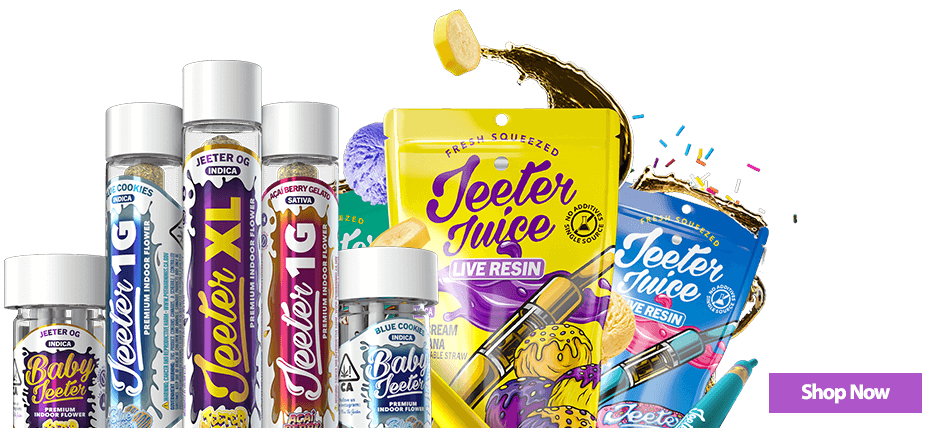Lotions
What Exactly Are Cannabis Lotions?
A CBD cream is more than a moisturizer with CBD integrated into its formula. Products such as transdermal patches, creams, balms, ointments, and lotions that contain exceptionally high concentrations of CBD are referred to as saturated. The pain relief they provide ranges from mild to moderate, and they can be used topically to relieve muscular tension, bring on sleep, or all three.

The ratio of oil to water, often found in health and beauty lotions, is 50:50. This ratio provides appropriate hydration to the skin. In topical CBD formulations, cannabinoids, terpenes, and other substances that are good for the skin, such as vitamin E and aloe, may be incorporated. Research the effects of CBD oil on blood pressure if you have hypertension so you can make an informed decision about whether or not to use it.
How To Use Cannabis Lotion
The ease with which cannabidiol (CBD) topical therapies may be applied is one of the many advantages these types of treatments offer. After the root of the issue has been isolated, a lotion or other topically applied treatment can be utilized as required. To use CBD body lotion appropriately, one has to be aware of the number of milligrams it contains; this is not the case with conventional lotion.
A topical solution with a low CBD concentration is likely less effective than one with a more significant CBD. This is something that should be considered. When taking a new medication for the first time, it is always better to begin with the least hazardous and lowest dose that is feasible. The next step is gradually increasing your CBD cream until you reach the therapeutic level.
Why Use Cannabis Topicals?
It has been demonstrated that various topical cannabis formulations help treat a wide range of skin disorders and their associated discomfort. Cannabis topicals are unlike anything else on the market since they do not include any psychoactive components and are, as a result, entirely risk-free for usage on very young children and babies. The medical advantages may be absorbed topically, and no negative effects on the mind are associated with this.
There is some evidence to show that the endocannabinoids that are found in marijuana are good for the skin. Patients suffering from psoriasis and eczema have reported feeling better after utilizing topical treatments containing cannabis. When treating skin irritations brought on by allergies, cannabis-based topicals can help speed up the healing process, which is an advantage of doing so.
The elements of the marijuana plant are known to provide medicinal benefits such as analgesic and anti-inflammatory effects. Cannabis salve has the additional benefit of reducing inflammation and alleviating minor pain. Because THC and CBD both have anti-inflammatory qualities, cannabis topicals may help ease the discomfort associated with arthritic conditions.
Also helpful for alleviating pain associated with various types of muscular strain. Lastly, cannabis-derived topicals are entirely unaltered from their original state. They are easy to prepare and beneficial to your skin and the rest of your body. It will not have the same irritating effects on your skin as other chemicals do, as the implication suggests.
How Do Topicals Work?
Cannabinoid-infused topical products can come in various formats, including but not limited to creams, ointments, lotions, oils, and lubricants. Because they bring cannabinoids and terpenes from the cannabis plant to the skin's surface, where they might potentially connect with receptors there, these products are beneficial.
What Are The Different Kinds Of Topicals?
The formulation and product type possibilities available in the topical market are broader than ever, and the industry is amidst a renaissance. The following items, except the tiniest one, ought to be available at the dispensary in your neighborhood:
- Salve
- Cream
- Oil
- Lotion
- Spray
- Bath products (salts, bath bombs)
- Transdermal patch
Emollient topicals, such as balms and creams, are excellent transporters for cannabis-infused oils because of their capacity to absorb oils rapidly and distribute them throughout the skin. Sprays, which often contain alcohol as a solvent to assist cannabis in more readily penetrating the skin, may be the best option for people with oily skin. Sprays can help cannabis infiltrate the skin more easily.
You can relax more easily and concentrate on yourself if, in addition to the plant medicine, you take a bath with bath bombs or salts. They provide a more generic and overall relief than addressing specific symptoms like a hurting knee or wrist.
Can You Get High By Using Topicals?
The answer is not in any significant way. One of the most appealing aspects of topicals is that they do not cause users to become high and do not show up on drug tests. As a result of the fact that most topical therapies do not cross the blood-brain barrier or reach the central nervous system, they will not show up on a drug test, and they will not cause the user to get inebriated.
In recent years, there has been a significant increase in demand for cannabis-infused lubricants and other items for sexual health that attempt to excite and promote sexual desire. The existence of exceptions, such as cannabis lube, is highly rare. The consumer should eventually decide whether they want a water- or oil-based product variation.
There are various semipermeable membranes in and around the genitalia, and some of them may have penetration enhancers that allow them to reach circulation. In addition, there are several semipermeable membranes in the genitalia. Cannabinoids are administered to the bloodstream gradually and steadily through transdermal topicals such as gels and patches. Injections like this are often given into a veiny part of the body, such as the inside of the wrist or the bottom of the foot.
According to the findings of a research project carried out on rats. These cannabis-infused transdermal patches contain penetration enhancers that may be able to induce an effect similar to that of smoking the drug. If THC is present in a transdermal topical, there is a possibility that the user may become intoxicated and will have a positive result on a future drug test.
CBD And The Skin
Cannabis, marijuana, and cannabis, a psychoactive substance, are all members of the same plant family known as cannabis. Cannabidiol is one of the several phytochemicals and cannabinoids in cannabis that do not produce intoxicating effects (CBD). Tetrahydrocannabinol (also known as THC) is one of the most prevalent cannabinoids, and it is responsible for the notorious psychoactive effects of cannabis. Cannabis, on the other hand, may be sold legally in the United States as long as it has a THC content that is less than 0.3%. So, hemp is one of the most common raw materials for manufacturing and extracting CBD.
.jpg?1672173613819)
THC is the psychoactive component of marijuana. CBD oil extracted from cannabis plants may be used to produce a wide variety of CBD products, including tinctures of CBD oil, CBD chewables, and many other edibles and topical creams. CBD oil can also be used to make topical creams. CBD medications, whether applied topically or taken orally, do not have the same impact as THC-containing medical marijuana treatments, which offer a "high."
What Can Marijuana Lotions And Topicals Offer?
Many people include marijuana-infused topicals in their cosmetic routines. It might come as a surprise to learn that some people use THC, the primary psychoactive component of marijuana, in their routines for caring for their skin. Cannabinoids, which include THC and CBD, as well as cannabinoid acids, are all components of the plant that have the potential to impact skin health.
THC, much like CBD, has the potential to influence the skin. THC, on the other hand, can accomplish this more directly. This chemical has an extreme affinity for binding to CB1 and CB2 receptors, which makes sense given that these are the two most prevalent receptors in this system. As a consequence, THC can activate regions inside the skin that participate in essential physiological processes such as cell proliferation, differentiation, inflammation, and the death of cells.
Marijuana also contains additional phytochemicals, several of which are utilized in current dermatological therapies. Terpenes are the names of the aromatic chemicals that may be found in cannabis. On current models of wound healing, inflammation, and fungal infection, topicals based on terpenes are being explored for their potential therapeutic effects.
The plant produces flavonoids, which are chemicals that act as antioxidants. Although you may find some of these substances in other plants, the concentration that can be found in marijuana is by far the highest. Research is being done to investigate whether or not these compounds have any possible anti-inflammatory, anti-proliferative, anti-aging, or photoprotective benefits. Cannabinoids derived from cannabis provide the greatest potential for use in cannabis topical applications. As a result of the difficulties associated with researching THC due to the widespread illegality of the substance, CBD has gained popularity as a component in skin care products.
CBD For Treating Wounds And Pain
Products designed to care for wounds, such as antibacterial wipes to stave off infections and herbal medicines to promote faster recovery, are readily accessible. Currently, there is insufficient data to suggest that cannabidiol (CBD) can be used as a treatment for wounds or burns. To what degree does CBD come into play, and is it alright to use CBD oil on an open wound?
It is a recipe for disaster to apply marijuana lotion or any other kind of cosmetic to a wound that is already susceptible to infection. On the other hand, research into the benefits of CBD topicals on concerns such as wound healing, blistering, and pain is only getting started.
Relationship Between Cannabidiol And Acne
Sebum is produced by the skin's follicles, which are little oil glands, to protect and moisturize the skin. However, an abundance of this protective ingredient can cause acne. Because of excess sebum production, hair follicles get blocked, leading to acne development. In addition, because they are such ideal environments for the growth of bacteria, they can make acne that already exists worse or even produce new outbreaks.
.jpg?1672173974790)
Is there any evidence that marijuana may help clear up acne, and should you use a lotion that contains marijuana? Again, there is a lack of convincing evidence. Still, researchers are intrigued by the possibility that CBD may positively impact human sebocytes (the cells responsible for producing sebum) and have an anti-inflammatory effect.
Eczema And CBD
The development of eczema can be brought on by a combination of causes, including activation of the immune system, inheritance, and environmental variables such as dry weather and detergents. Although there are a variety of therapies available to ease the symptoms of eczema, not all of them help. Researchers are investigating whether or if CBD might help reduce the inflammatory response, as this condition is largely caused by inflammation. In addition, CBD causes a rise in the levels of endogenous cannabinoids, which are now being researched in models of dryness and itching. Before taking a significant amount of CBD, you should try a small dose to see how the compound will affect your body.
Sunburn And CBD
An overexposure to the sun's ultraviolet (UV) light can lead to sunburn development. This causes discomfort initially because of the redness, peeling, and soreness. Nevertheless, it can raise the risk of developing skin cancer in the long term. When it comes to relieving sunburn, a lot of individuals are interested in CBD lotion as a treatment option. Thus, there are sunburn lotions containing CBD, which may be administered in the same manner as conventional sun creams.
CBD And Psoriasis
Psoriasis is characterized by an abnormal proliferation of skin cells, which is assumed to be the outcome of a dysfunction within the immune system. Psoriasis is caused by a swift proliferation of skin cells, which leads to the disease. Under normal circumstances, the skin's basal layer produces new skin cells. These cells eventually pass away and are replaced by newer, younger ones as time passes.
CBD can encourage the development of specific skin cells. An accumulation of immature skin cells close to the skin's surface can cause dry, flaky, and itchy skin. Patients with psoriasis who use CBD cream should liberally apply it to the regions impacted by their condition.
Tattoos And CBD
Self-expression may take many forms, but getting a tattoo will last a lifetime. On the other hand, it is common knowledge that sketching with ink under the skin is an unpleasant experience. To reduce feelings of anxiety and discomfort, people have the option of taking CBD either before, during, or after their treatment. Others choose to inhale or consume CBD products before having a tattoo. In contrast, others prefer to apply CBD ointments to the region, which will be linked to alleviating any discomfort caused by the tattoo after the risk of infection has gone.
.jpg?1672174020952)
Those with a new tattoo may find that using topical anesthetics, such as soaps infused with CBD, as well as analgesics and antiseptics, can be beneficial to their experience. Does anyone have any information on whether or not CBD can ease the pain associated with getting a tattoo? Even if there isn't any research that has been done on the subject, there are a lot of tales that go in the opposite direction.
CBD Transdermal Patches
It has been discovered that the transdermal distribution mechanism that is provided by cannabis patches can be more successful than that which is provided by marijuana creams in several different situations. CBD patches deliver cannabinoids directly into the circulation, whereas topical CBD products like lotions, ointments, creams, and balms only provide local effects on the skin. Transdermal CBD patches are also available.
The shoulders, lower back, and the arm's interior are the three areas ideal for applying CBD transdermal patches. The process of cannabinoid release involves many layers of the skin, specifically the microcirculation, the epidermis, and the dermis. Cannabinoids are absorbed via the skin and into the circulation using transdermal patches, allowing more effects to be experienced.
They impact the skin and the endocannabinoid system, which is responsible for regulating activities throughout the body, including those of the brain, stomach, and heart, among other organs. People who wish to feel the benefits of the compound on their skin have a terrific alternative available to them in the form of transdermal patches that contain CBD. On the other hand, they aren't the ideal choice for those who wish to keep CBD out of their bodies for various reasons, including the fact that it can interfere with medications.
Make Your Cannabis Creams And Lotions
Because they include water, creams and lotions would rapidly get infected with germs and yeast if preservatives were not added. Therefore, to maintain the longevity of their shelf life, all cosmetics, including those called "organic" or "biological," are required to contain a preservative. Preservatives are optional when only tiny amounts that will be consumed immediately are combined. Additionally, handmade cannabis creams and other non-preservative-free goods should be stored in the refrigerator for optimal freshness.
Because of the small batch sizes, you can only utilize natural raw materials that have not been altered and are of the greatest possible quality. It is essential to consider the spreadability and homogeneity of the cream or lotion in question. The oils are prevented from separating from the moist elements. It is crucial to use a cannabis lotion or cream that is constant to medicate with cannabis appropriately.

Before combining anything, you want to ensure that all the components are at the same temperature. The optimal temperature is around 71 degrees Celsius (about 160 degrees Fahrenheit). The temperatures of the components are brought up to 80 degrees Celsius (never more than 90 degrees). Before they can be combined, they need to reach a temperature of sixty degrees Celsius.
When all of the components, including the natural emulsifiers, are brought to the same temperature and allowed to assume a liquid state, it is possible to produce cannabis salves and lotions that are delectable, of the highest possible quality, and so uncommon that you will not be able to find them anywhere. In addition to lipids (both liquid and solid), oils, and waxes, these creams also include cannabis, similar to cannabis lotion bars. There have been claims that certain fragrance oils include manufactured compounds known to irritate the skin and bring on allergic reactions. However, there is a trade-off involved: they are often much more affordable than the fit and suggested alternatives.
Rose Cannabis Cream
It has been discovered that using Cannabis Rose Cream on the face and hands consistently can have some positive effects. In addition to supplying the skin with hydration, it also calms and smoothes the skin's surface.
Ingredients
- Rose water, distilled, 120 ml
- 1/2 tsp. of lime juice
- Aloe vera gel, 60 ml (freshly scraped from the leaf)
- 2 tbsp. mango seed butter
- 1/2 teaspoon sunflower lecithin (2.5g)
- Oil of cannabis seed 60 milliliters
- Oil of cinnamon, one drop
- Rose oil two drops
Blend the rose water, lime juice, and aloe vera gel for a few seconds until you have a drink with a smooth consistency. Put the liquid in a saucepan, and boil it to a temperature of 80 degrees Celsius by heating it. The mango seed oil, sunflower lecithin, and cannabis oil should each be heated to a temperature of 80 degrees Celsius in their saucepans. As soon as the butter and oil have mixed, take them from the heat and put them in a basin intended for mixing.
Maintain a steady whisking motion as you gradually add the heated rose water mixture. The mixture will take on a milky appearance when all of the essential oils have been incorporated. After filling the cream, place it in the refrigerator to chill. It is expected to last for around two weeks. When storing cannabis creams and preparations, ensure only to use equipment that has been properly sterilized and keep them in sterile containers.
Marijuana Lotions: A Fun And Homemade Preparation
And now you know everything there is to know about treating skin disorders with topical marijuana products, including how to manufacture your homemade marijuana lotion. In general, cannabis lotions are simple to prepare and use, and they provide an interesting twist to the conventional skin care procedures that are typically followed. Suppose you have already experimented with homemade cannabis lotions but are still not happy with the results. In that case, you might want to consider cannabis transdermal patches, which have more broad effects throughout the body.
Instructions For Creating A Cannabis Lotion
The time has arrived to launch the manufacturing of cannabis-infused topical treatments. Even if you do not have the same manufacturing facilities as multinational corporations, you can still produce your marijuana salve at home. The process of making cannabis butter is quite similar to the process of making cannabis-infused creams and lotions. When you have mastered the skill of creating cannabutter, you will then be able to go on to prepare lotions.
COMPONENTS AND APPLIANCES
- Coconut oil 250 to 500 milliliters
- 15-30 g of dry bud marijuana
- Cheesecloth
- Beeswax, in addition to other ingredients such as almond oil and shea butter, is beneficial to the skin
- Preparation for the act of putting things away
Instructions
It is necessary to crush the buds and then decarboxylate them at a temperature of 110 degrees Celsius for forty-five minutes. Put in a sufficient amount of coconut oil to cover the base of the pan. Place it over low heat and give it some time to get hot.
After the decarboxylation process has been completed, the cannabis should boil for three to four hours. After combining all of the other ingredients and allowing them to cool, you may enhance the flavor of the cream by mixing them. After passing the mixture through cheesecloth to strain it, transfer the liquid to storage containers. It is important to remember to strain the flowers through the cheesecloth to preserve the maximum amount.
It is advised that makers of cannabis-infused topical lotions experiment with a variety of components to identify those that are most effective in treating the condition being treated. You will be able to create a solution in this manner that is suitable for the characteristics of your skin. You are free to apply any cream, salve, or lotion available for purchase, regardless of your preference (from almond milk and shea butter to your homemade balm). Get ready to broaden your horizons and learn to appreciate marijuana in ways you haven't done so in the past.
What Advantages Can Topical Cannabis Products Offer?
In contrast to smoking or vaping, which disperse cannabinoids and terpenes throughout the bloodstream and to numerous receptors throughout the body, topical treatments target a specific location. These goods provide one-of-a-kind advantages that cannot be found elsewhere. It's possible that some people don't want or need the mental effects of THC, but those who wish to may get their hands on THC creams that still give all of the benefits despite lacking the high.
Other Benefits Of These Cannabis Products
You can take them in hand and begin putting them to use right now. Using a topical medicine is as simple as applying a lotion or salve to the skin, but for first-timers, dabbing and smoking might be difficult to administer. It is simple to use them. An overdose is a possible outcome of engaging in risky behaviors such as smoking, vaping, or eating excessively. On the other hand, dosing is far less complicated when using topicals, and there are no adverse effects associated with using too much of the product.
They allow for a regulated discharge that is conducted in a manner that is gradual and consistent. Ingestion of cannabis can take up to an hour to produce effects, significantly longer than other ways, such as smoking or vaping. The use of topical therapy has a modest impact since it enables a rapid and consistent release and allows the user to add more treatment as required. It's possible that the impact of ingestible cannabis products, as well as smoked and vaporized marijuana, is too potent for certain people's preferences.
.jpg?1672174537887)
It is imperative that the lungs not be damaged in any way. People who indulge in the practice of smoking tobacco are quick to defend it, but research has revealed that the smoke from marijuana includes many of the same dangerous components. When you eat a pot brownie, take a marijuana tablet, or use a cannabis tincture, the active chemicals in the marijuana often dilute by the time they reach your bloodstream. So they can circumvent the first-pass metabolism of the body.
This is true whether you consume marijuana as a brownie, pill, or tincture. This issue may be sidestepped with topical treatments because they do not involve the digestive system in any way. They work hard to avoid taking their drugs irregularly throughout the day. When cannabis is smoked as opposed to when it is vaped, the cannabinoids and terpenes inhaled into the body are absorbed differently. Topicals, on the other hand, provide a constant flow of cannabinoids and terpenes, which benefits those who use marijuana for medicinal purposes or who desire long-term comfort.
What Exactly Are Cannabis Ointments And Creams?
Cannabis-based topical therapies are beneficial for treating various skin and muscular disorders. Patients are cured by using these medicines, but they do not cause the typical high associated with cannabis. A significant study has been done to investigate CBD and THC's potential anti-inflammatory properties. They may use cannabis-infused topical therapy to target the problematic regions directly.
This therapy helps mend and strengthen muscles that have been overused by taking a focused approach to the problem. The usage of marijuana has enormous repercussions for society. Creams containing cannabis can be used for sensitive skin care and treating skin conditions such as redness and acne. When utilizing a cannabis lotion, there is no need to smoke, vape, or swallow cannabis because the lotion gives quick relief.
Creams generated from cannabis have been proven to be an efficient and successful technique for enhancing the homeostasis of the skin in a variety of ways. Try using a cannabis lotion or ointment topically on your skin if you want the skin's natural ability to retain moisture to improve. In addition, they are beneficial to your health in general, which is a nice additional perk.
Applying Marijuana Lotions, Creams And Balms
It is important to properly cleanse your skin with gentle soap and warm water. Before it can be used, it needs to be dried out entirely. Before using a particular lotion or brand, you should always do a patch test on a small skin area.
.jpg?1672174405129)
A thin coating of cannabis lotion should be applied. When your muscles hurt, you should take everything you can get your hands on. Massage the region with soft, circular strokes with your fingertips. If it's required, you should do it once more. Applying soap to your hands and rubbing it in will remove the lotion.
CBD Lotions And Creams
Using cannabis topically is a relatively new method for ingesting the herb. This kind of chemical has been around for thousands of years, even though you have not yet applied it to your skin at this time. One of the most widely used components of marijuana for topical applications is cannabidiol, or CBD for short. CBD is legal in several jurisdictions, and its pharmacological effects have been the subject of significant research. Companies in a diverse range of CBD topicals, including the following, use this cannabinoid:
- CBD oil for topical use
- Topical CBD cream
- Ointments, balms, salves, and other lotions
- Patches
The endocannabinoid system, also known as the ECS, is a global regulator of the human body and may be found in the skin. This system helps keep the skin in good health by exerting control over various cellular processes, such as cell proliferation and differentiation. It has been demonstrated that CBD interacts with the SEC, and specialists are now researching the consequences of this interaction on inflammation, pain, and aging. When taken orally or inhaled, CBD may have an adverse effect when combined with various other drugs. However, the application of the substance topically is the most prudent choice.
The Bottom Line
Saturated CBD products include transdermal patches, creams, balms, ointments, and lotions. The term "saturated" refers to the extraordinarily high amounts of CBD in these products. The level of pain relief that they offer ranges from mild to severe, and they can be used topically to reduce muscular tension, induce sleep, or accomplish all three of these objectives. A moisturizer containing CBD as an ingredient is not the same as a CBD cream, which is more than just a moisturizer.
One of the numerous benefits that cannabidiol (CBD) topical therapies may give is the simplicity with which they can be applied. This is just one of the many benefits of these treatments. After the source of the problem has been identified, a lotion or some other kind of therapy that is administered topically can be employed as necessary. In order to make optimal use of CBD body lotion, one must be informed of the number of milligrams it contains; this is not the case with regular cream.
A topical solution with a lower CBD content will likely have less impact than one with a higher CBD concentration. This is a point that has to be taken into consideration. When starting a new drug for the first time, it is always best to begin with the safest and the smallest amount that is practical. Doing so will reduce the likelihood of adverse effects. The next thing you need to do is work your way up to the therapeutic amount of CBD cream by gradually increasing the amount you use.
It has been shown that different topical cannabis formulations assist in treating a wide variety of skin problems and their associated discomfort. Cannabis topicals are unlike anything else available on the market since they do not include any psychoactive components. Consequently, they pose no danger when used on very young children or infants and may be safely applied to any part of the body. The medicinal benefits may be taken topically, and there are no adverse effects on the mind connected with doing so.
Cannabinoid-infused topical treatments can be found in various formulations, including but not limited to creams, ointments, lotions, oils, and lubricants. These products are effective because they transport cannabinoids and terpenes from the cannabis plant to the skin's surface, where they have a better chance of connecting with already existing receptors. These formulations can be applied topically to treat a variety of conditions.
Because of their capability to swiftly absorb oils and disseminate them throughout the skin, emollient topicals such as balms and creams are great transporters for cannabis-infused oils. Sprays, which sometimes include alcohol as a solvent to assist cannabis in more quickly permeating the skin, would be the best option for people with oily skin since sprays can help cannabis penetrate the skin more easily. Sprays can assist in making cannabis more easily absorbed via the skin.
If you take a bath with bath bombs or bath salts in addition to plant medicine, you will find it much simpler to relax and concentrate on only yourself. When compared to addressing particular symptoms, such as a sore knee or wrist, they offer a sensation of comfort that is more general and all-encompassing.
Topicals loaded with marijuana are becoming increasingly common in people's beauty regimes. It is possible that hearing that some individuals include THC, the principal psychoactive component of marijuana, in their regimens for taking care of their skin would come as a complete surprise to you. Cannabinoids, which are plant components that have the potential to affect the skin, include THC and CBD, as well as cannabinoid acids.
In contrast to smoking or vaping, which distribute cannabinoids and terpenes throughout the circulation and to multiple receptors throughout the body, topical therapies target a specific site. Topical treatments can be applied directly to the affected area. These products offer one-of-a-kind benefits that cannot be found in any other product on the market. Likely, some individuals don't want or need the mental effects of THC, but those who want to can get their hands on THC creams that still deliver all of the advantages despite not causing the high. This is an option for those who are interested.
Disclaimer: This material is for informational purposes only and should not be relied on for legal, medical, financial, or any other form of professional advice.











